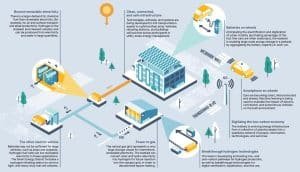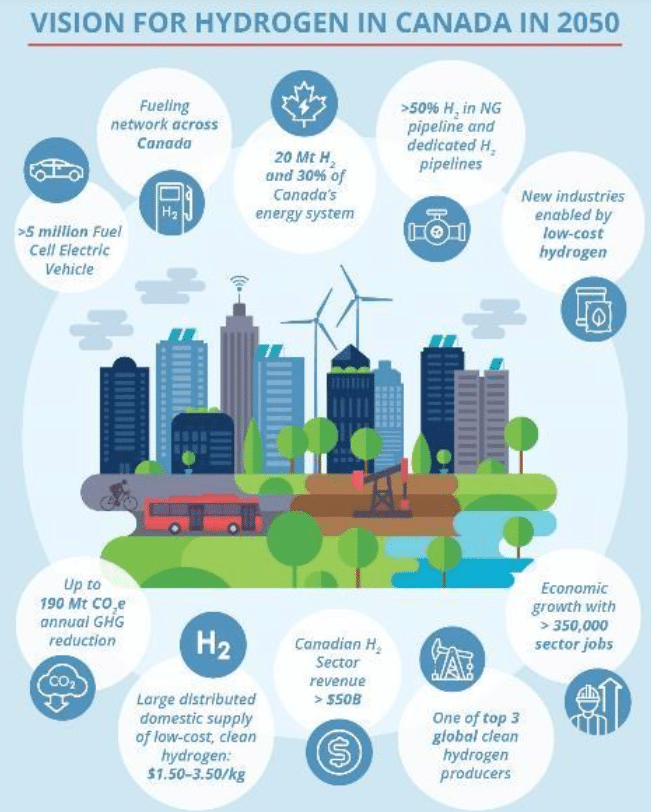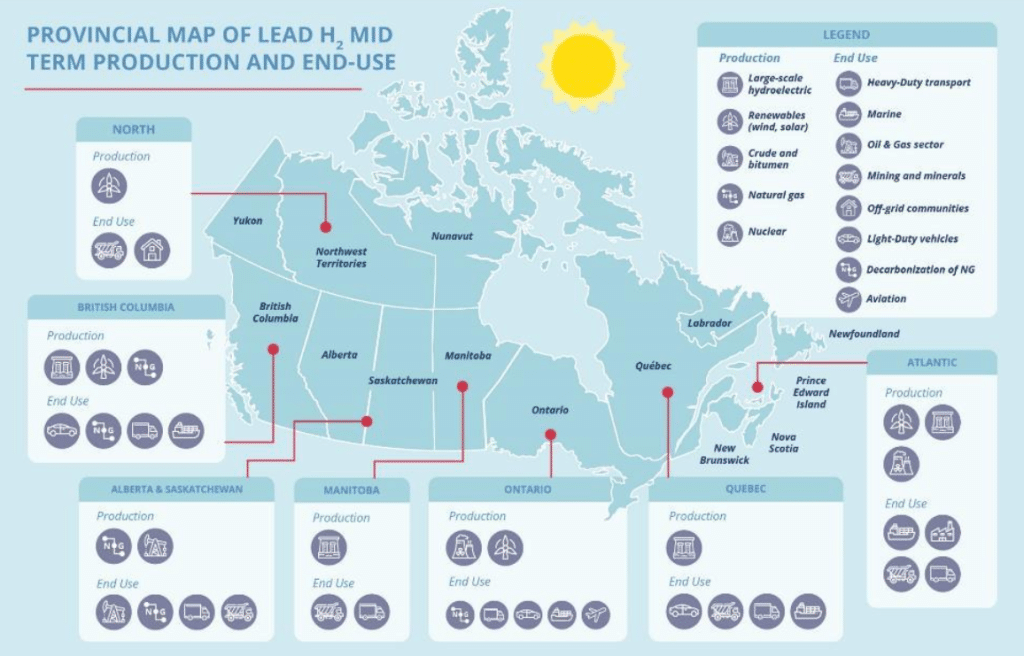As Canada strides towards its net zero pledge, the University of British Columbia has unveiled the Smart Hydrogen Energy District (SHED), a $23 million facility dedicated to advancing hydrogen infrastructure and renewable energy research. This innovative project, powered by solar and hydropower, showcases hydrogen’s pivotal role in achieving a sustainable, low-carbon future for Canada.
Advancing Hydrogen Innovation at BC
The Smart Hydrogen Energy District (SHED) at the University of British Columbia (UBC) has been officially launched, marking a significant advancement in British Columbia’s hydrogen infrastructure. This $23 million facility, equipped with a hydrogen fueling station, aims to revolutionize critical energy research.
SHED will produce hydrogen using solar and hydropower to operate a water electrolyzer, ensuring a completely green and renewable process. It is one of the pioneering initiatives to combine hydro, solar, and hydrogen energy at a single site, connecting these renewable sources to a unified micro-grid.
Notably, SHED will be the province’s first hydrogen station to serve both light- and heavy-duty vehicles.
Honourable Josie Osborne, Minister of Energy, Mines and Low Carbon Innovation, said that UBC SHED is a significant leap toward building a clean economy. Osborne further noted that by integrating energy, transportation, and design, SHED supports CleanBC goals and positions British Columbia as a global leader in the hydrogen economy.
Bridging Renewable and Sustainable Energy
Dr. Walter Mérida, SHED research lead, highlighted the importance of hydrogen in Canada’s transition to a low-carbon economy. He remarked that SHED demonstrates hydrogen as a bridge between renewable electricity and sustainable energy services.
SHED combines various technologies within a city block, serving as a model for compact urban planning. A rooftop solar array powers both the hydrogen fueling station and nearby electric vehicle (EV) charging stations. Two-way charging enables parked EVs to draw power from the grid and return excess stored electricity during peak demand hours.
With this kind of infrastructure, cars can also serve as mass power banks, stabilizing the electric grids of the future.
A secure 5G network connects SHED’s systems, enabling researchers to create digital simulations for energy, transportation, and urban planning research.

Leading the Charge in Hydrogen Infrastructure
Jovan Ceklic, Director of Hydrogen Infrastructure at Powertech Labs, highlighted the importance of this UBC hydrogen development, saying:
“Powertech Labs is excited to have partnered with the University of British Columbia to bring one of the first-of-its-kind truly green hydrogen stations. With an on-site electrolyzer powered by solar power and support from BC Hydro’s green energy grid, the UBC station produces some of the cleanest hydrogen on the market.”
Ceklic also noted that it’s a significant milestone being one of the “first mixed-use stations able to dispense 350 bar and 700 bar fuels for light and heavy-duty applications in Canada”. Moreover, it can potentially offset the tailpipe emissions from more than 4,300 cars. And with the transportation sector responsible for releasing almost 21% of all greenhouse gases in the country, every hydrogen station counts, he added.
Powertech has over 20 years of experience in the hydrogen industry, providing various hydrogen transport products and refueling services. These include hydrogen station testing, hydrogen fueling services, hydrogen station capabilities and services, and more.
Powertech has deployed over 90% of the installed hydrogen fueling stations in Canada, according to Ceklic. The country has been investing in the hydrogen sector as outlined in its Hydrogen Strategy.

Clean hydrogen can deliver up to 30% of Canada’s end-use energy by 2050. This means abating up to 190 Mt of CO2e of GHG emissions through deployment in transportation, heating, and industrial applications.
Mapping the country’s hydrogen production and end-use, this is how it looks, according to Canada’s Hydrogen Strategy.


Catalyzing the Hydrogen Economy
The global hydrogen market is expected to grow significantly in the coming decades. Announced hydrogen production could cover 50% of the volume needed to meet global net zero emissions goal.
With interest in hydrogen booming across Canada, UBC’s SHED is hoped to attract other clean energy innovators. The goal of the project is to accelerate climate solutions and seek industry and private sector partners for collaboration.
SHED’s launch represents a pivotal step in the evolution of hydrogen infrastructure and renewable energy research, positioning British Columbia at the forefront of the global energy transition.
Over in Alberta, the province also launched its inaugural commercial hydrogen fueling station with Nikola Corporation’s HYLA brand in April. This major hydrogen initiative is also a product of collaboration among key stakeholders.
In Canada’s 2024 budget, there was a plan to introduce clean hydrogen investment tax credits soon. This could further fuel support and investment in building more hydrogen infrastructure in the country.
The UBC Engineering project marks a major milestone in British Columbia’s push towards a sustainable hydrogen economy. By combining solar, hydro, and hydrogen energy, SHED is poised to drive significant advancements in clean energy research and infrastructure, solidifying the region’s position as a leader in the global energy transition.
- SEO Powered Content & PR Distribution. Get Amplified Today.
- PlatoData.Network Vertical Generative Ai. Empower Yourself. Access Here.
- PlatoAiStream. Web3 Intelligence. Knowledge Amplified. Access Here.
- PlatoESG. Carbon, CleanTech, Energy, Environment, Solar, Waste Management. Access Here.
- PlatoHealth. Biotech and Clinical Trials Intelligence. Access Here.
- Source: https://carboncredits.com/university-of-british-columbia-and-powertech-pioneer-23m-hydrogen-fueling-station/



